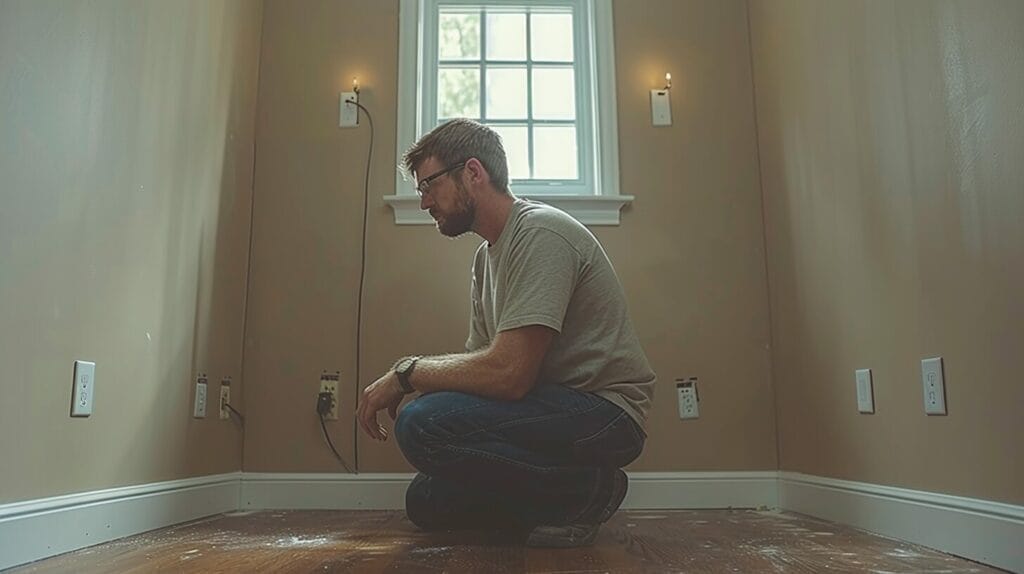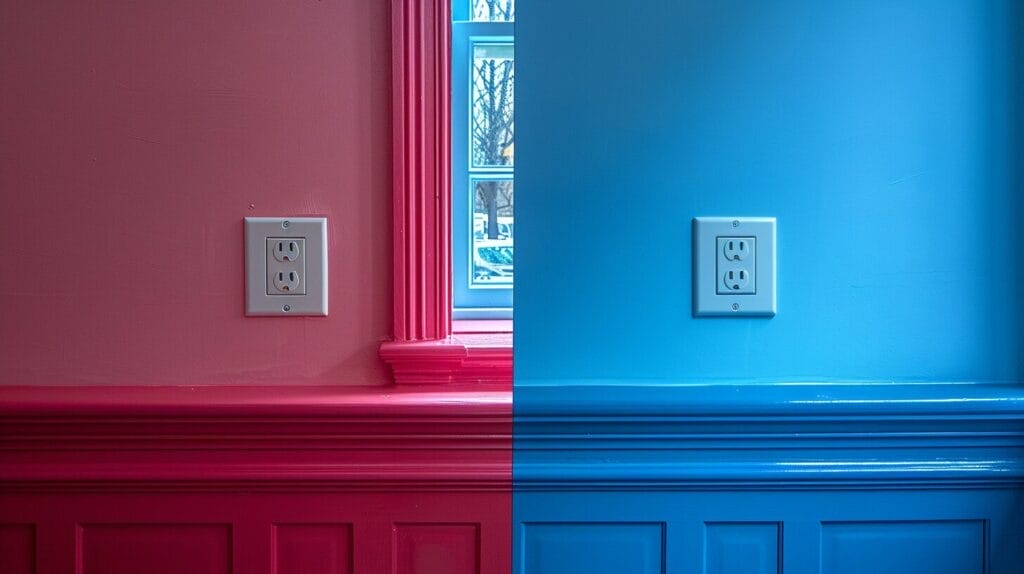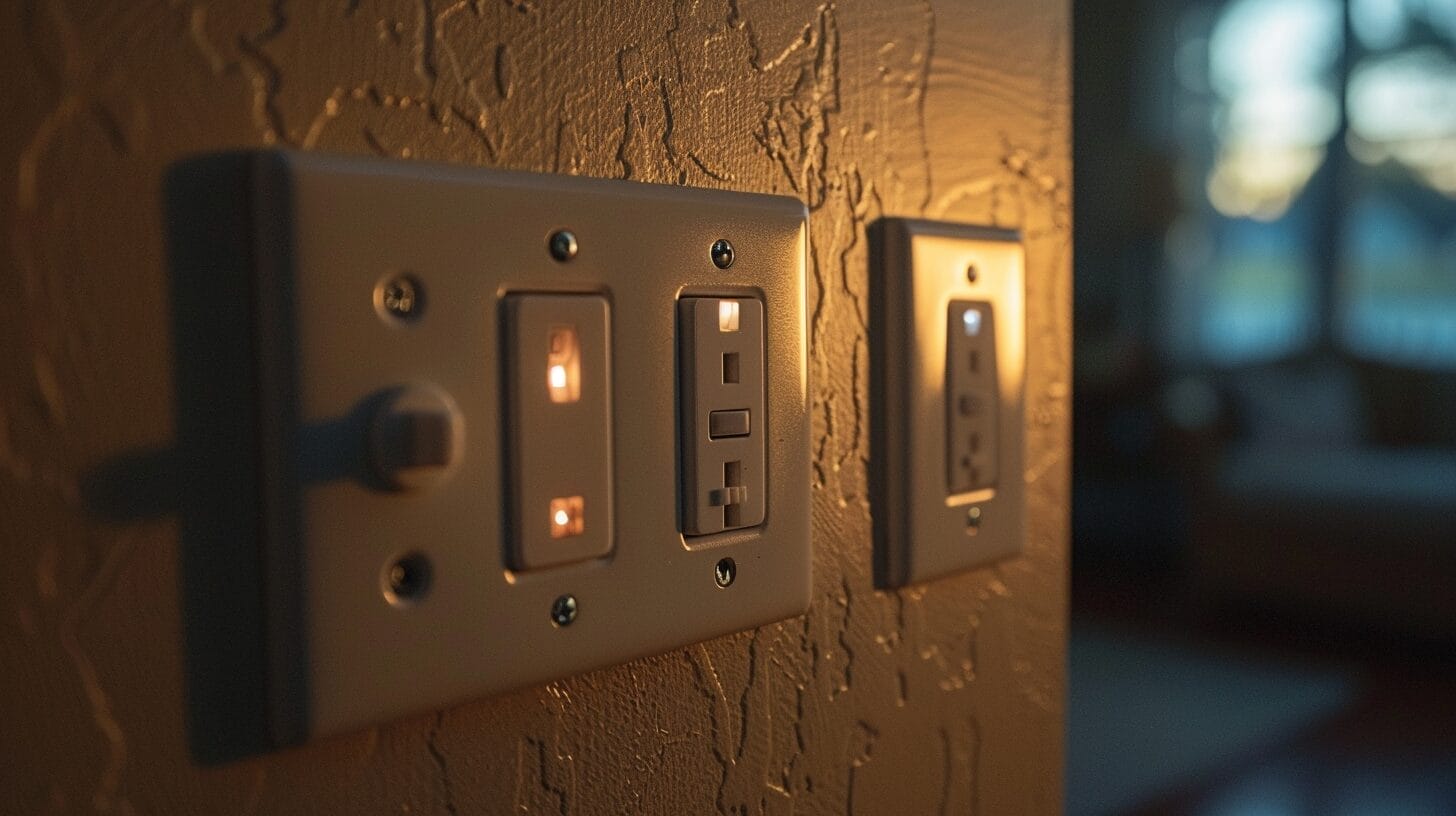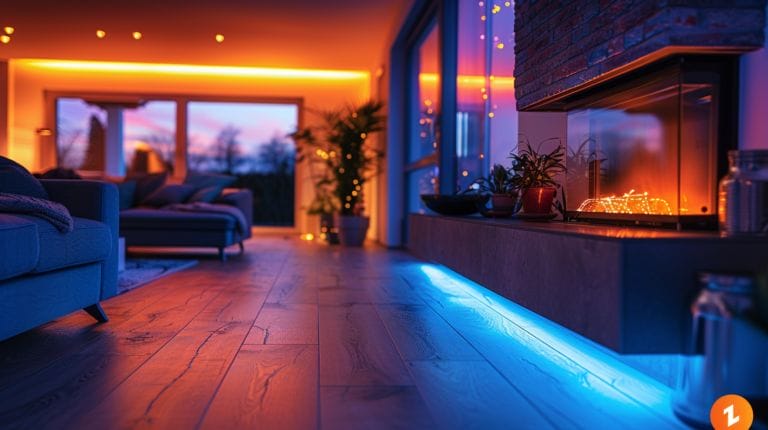How High Should Light Switches Be: Proper Installation Steps
When it comes to setting the height for light switches, it’s like aiming for the perfect strike in bowling – precision is key.
But, have you ever wondered how high is just right? Join us as we explore the nuances of setting light switch heights and the proper installation steps to confirm convenience and functionality in your living space.
Learn how high should Light Switches be and strike the balance between accessibility and aesthetics, making your everyday interactions with light switches seamless and comfortable.
Key Takeaways
- Ideal light switch height ranges from 48 to 52 inches for accessibility and functionality.
- Proper positioning prevents interference with lower cabinets and complies with regulations.
- Coordinate switch height with nearby outlets for cohesive and user-friendly design.
- Universal design principles guide flush installation at standard heights for safety and convenience.
Understanding the Standards for Light Switch Height

When installing light switches, it’s important to adhere to specific height standards outlined by the National Electrical Code (NEC) and the Americans with Disabilities Act (ADA) to guarantee accessibility and safety. The NEC standards dictate that the bottom of the switch box should be at least 15 inches above the floor. This height ensures that the switch is easily accessible and operable for most individuals. However, for individuals who use wheelchairs, the ADA recommends placing the switches slightly lower, between 15 to 48 inches above the floor, to accommodate their reach comfortably.
In kitchen areas with lower cabinets, it’s essential to position the light switches higher to prevent interference with the cabinets’ opening and closing. Following these guidelines assures compliance with regulations and promotes inclusivity and user-friendly design. Properly placed light switches enhance the overall usability of a space and contribute to a more accessible environment for everyone.
Measuring and Determining the Ideal Light Switch Height

To ensure the proper height for light switches, it’s important to consider various factors and employ accurate measurement techniques. The typical height range for light switch installation is 48 to 52 inches from the floor to the bottom of the switch box. Factors such as the room’s function, the occupants’ heights, and accessibility requirements should also influence the switch height decision. Measuring from the finished floor to the switch box’s bottom ensures a comfortable reach for most individuals.
For children’s rooms, you may opt for a lower height within a reachable range for kids. In spaces requiring handicap accessibility, positioning the switches lower can enhance usability. By adjusting the light switch height based on these factors, you can ensure convenience and safety for all users.
How to Install Light Switches at the Standard Height

- Assess the Wall: Ensure that the wall is suitable for mounting the light switch. Look for any obstructions or wiring behind the wall that could interfere with the installation process.
- Positioning the Switch: Mark the standard height for the light switch, typically around 48 inches from the floor. This height guarantees easy access for all users and adheres to universal design principles.
- Flush Installation: When mounting the light switch, ensure it’s flush with the wall. A flush installation not only looks sleek and modern but also prevents any accidental snags or catches that could occur with a protruding switch.
Outlet Height vs. Light Switch Height: What’s the Difference?

While light switches are typically placed around 48 inches above the floor, outlets are usually positioned about 12 inches above the floor. This variance ensures that both elements are easily accessible and functional within a room. When designing spaces like kitchens, where countertop outlets are a necessity, the placement of switches and outlets must complement each other to meet building codes and provide convenience.
| Element | Standard Height |
|---|---|
| Light Switch | Around 48 inches |
| Outlet | About 12 inches |
| Kitchen Counters | Near counter height |
Understanding these differences helps in planning the layout of electrical elements efficiently, ensuring compliance with building regulations while maintaining a cohesive and user-friendly environment.
Can 12 Volt LED Lighting be Installed at the same height as regular light switches?
Yes, you can brighten your RV with 12 volt LED lighting at the same height as regular light switches. The low voltage of 12 volt LEDs makes them safe to install at typical switch heights, making them a convenient and energy-efficient option for your RV lighting needs.
Adapting Light Switch Height for Different Situations

Adjusting light switch height to accommodate specific needs in various settings requires thoughtful consideration and strategic placement.
- Countertop Placement: When switches are located near countertops, adjust their height to align with the countertop surface.
- Non-Standard Locations: In spaces with unique layouts or high-traffic areas, consider adapting the switch height to suit the specific requirements.
- Coordinating with Electrical Outlets: Maintain a cohesive and functional design by coordinating the height of light switches with nearby electrical outlets.
Conclusion
To guarantee, it’s important to install light switches at the proper height according to industry standards to guarantee ease of use and accessibility for all individuals.
By following the correct measurements and installation steps, you can create a more functional and user-friendly space in your home or building.
Remember to take different situations into account and adjust the height as needed to accommodate specific needs or preferences.
Properly installed light switches can make a big difference in the overall functionality and convenience of a space.
Frequently Asked Questions
How high should light switches be installed on the wall?
Generally, light switches located on walls should be around 48 inches above the floor as per standard guidelines.
What is the recommended height for light switches above countertops?
Light switches above countertops should be a minimum of 4 inches above the countertop for proper accessibility.
Can the height of light switches vary depending on specific circumstances?
Yes, the height of light switches can vary based on factors such as the height you need, preferences, and local building codes.
How can I ensure the proper installation of light switches in my home?
To ensure proper installation, it’s recommended to consult with an electrician or follow guidelines set by the NEC (National Electrical Code).
Are there specific regulations for installing light switches in ADA-compliant spaces?
Yes, light switches in areas accessible to residents in wheelchairs should follow ADA guidelines, which specify a maximum height of 48 inches above the finished floor.







